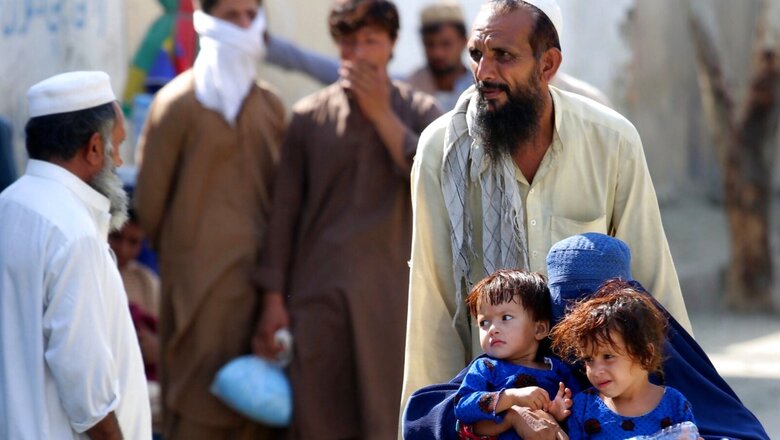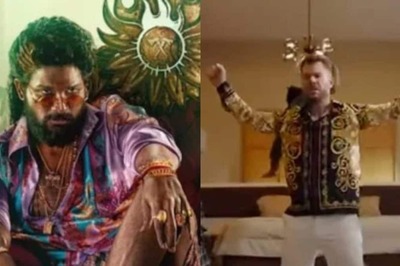
views
Afghanistan’s ethnic diversity has been at the centre of politics and conflict in the country for more than a century, and these divides are expected to play a role in the Taliban’s formation of a new government.
No single ethnic group has a decisive majority among Afghanistan’s 40 million people, and the fissures have been a perennial challenge to political stability.
Afghanistan was the world’s fourth most dangerous country in last year’s Peoples under Threat Index, compiled by Minority Rights Group International, which said all ethnic groups faced the risk of systematic violent repression and mass killings.
Here is a brief overview of the major ethnic groups in Afghanistan:
Pashtuns
The Pashtuns are Afghanistan’s biggest ethnic group, making up more than 42 percent of the population.
The group — which is predominantly Sunni Muslim and speaks the Pashto language — has dominated Afghan politics since the 18th century.
Many Pashtun leaders over the years have stressed a “right to rule” Afghanistan, which has angered other ethnic groups.
The Taliban, in control of Afghanistan for a second time after their 1996-2001 regime, are a Pashtun-dominated group.
Even the two presidents under the previous US-backed governments — Hamid Karzai and Ashraf Ghani — were Pashtuns.
Traditionally based in the south and east of the country, the dominant position of the Pashtuns has often caused resentment among other groups, especially because of political, economic and cultural marginalisation.
Tajiks
The Tajiks are the second-biggest ethnic group, making up more than a quarter of the Afghan population.
The main language among Tajiks is a dialect of Farsi called Dari, also the lingua franca of Afghanistan.
The group is mainly distributed in the north and west of the country, with strongholds in the Panjshir Valley, the western city of Herat and some northern provinces.
The Panjshir Valley is famed for resisting occupation not only by the Soviet military in the 1980s but also by the first Taliban regime.
While not politically dominant, a number of prominent Tajik leaders have emerged in recent decades.
The revered mujahideen leader Ahmad Shah Massoud — “The Lion of Panjshir” — who fought the Red Army and the Taliban is at the top of that list among Afghans.
Burhanuddin Rabbani, a Tajik from Badakhshan province in the north, served as Afghan president from 1992 to 1996 before Kabul fell to the Taliban.
Abdullah Abdullah, former chief executive and the main peace negotiator for the previous Afghan regime, is of mixed Pashtun-Tajik ethnicity but is widely considered the latter.
Hazara
The Hazara, believed to have origins in Central Asian and Turkic peoples, are around 10 percent of the population and are mainly based in central Afghanistan.
They speak a Dari dialect and are predominantly Shia Muslim.
The group faced violent oppression and discrimination in Afghanistan over both religion and ethnicity for more than a century.
They have also suffered massacres across various Afghan governments in recent decades, but especially under the Taliban — hardline Sunni Muslims who have usually labelled Shias heretics.
Other militants active in Afghanistan such as the Islamic State groups have also targeted the Hazara with deadly bomb attacks, not even sparing their schools and hospitals.
Uzbeks
Afghan Uzbeks are also around 10 percent of the population, mainly based in the north of the country close to the border with Uzbekistan.
A Turkic people, they are mainly Sunni Muslims.
The most famous, and notorious, Afghan Uzbek is the warlord Abdul Rashid Dostum, who fought with the Soviets against the mujahideen before changing sides and effectively setting up his own stronghold centred on the northern city of Mazar-i-Sharif.
He was a leading figure in the Northern Alliance that helped end Taliban rule after the US invasion of 2001, and later joined the Ghani administration as a first vice-president.
He fled to Uzbekistan when Mazar-i-Sharif fell to the Taliban this month.
Smaller ethnic groups
The Afghan constitution of 2004 officially recognised more than a dozen ethnicities. In addition to the four biggest groups, the nomadic Aimaq, the Turkmen and the Baloch were also listed.
Also included were the Nuristani people in the northeast of Afghanistan, who were forcibly converted to Islam in the 19th century.
Read all the Latest News, Breaking News and Assembly Elections Live Updates here.



















Comments
0 comment